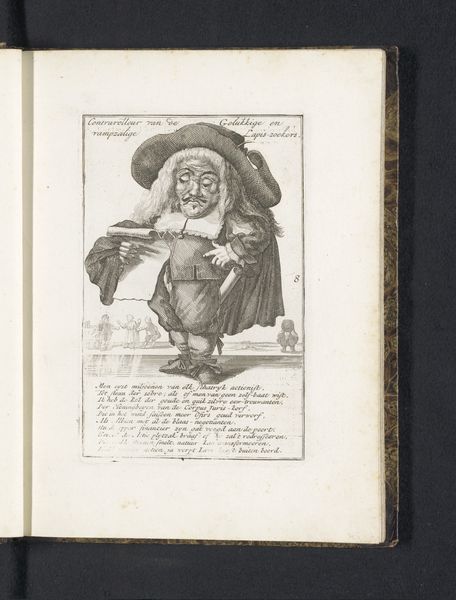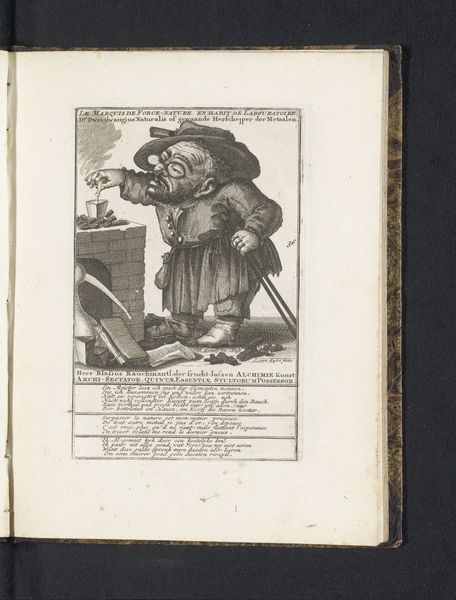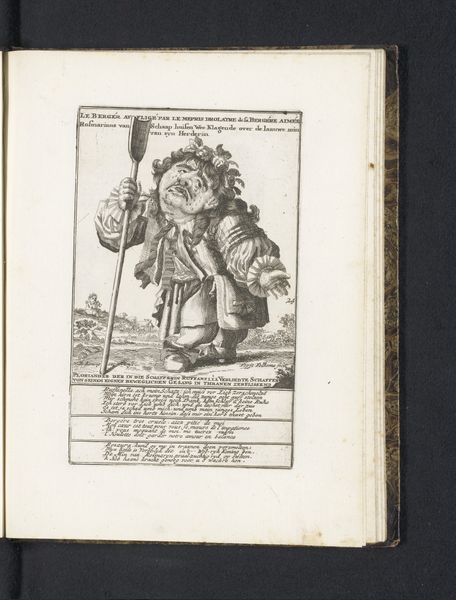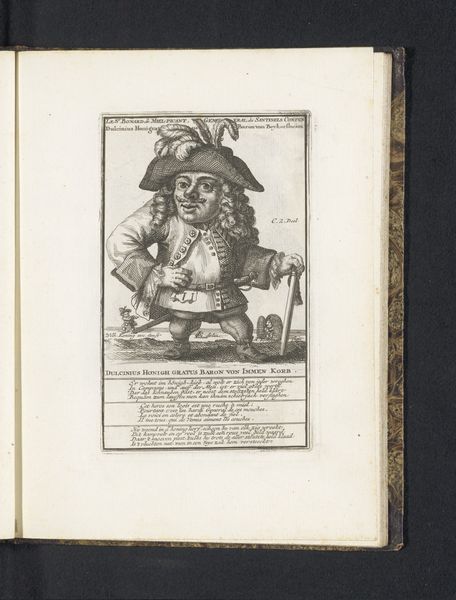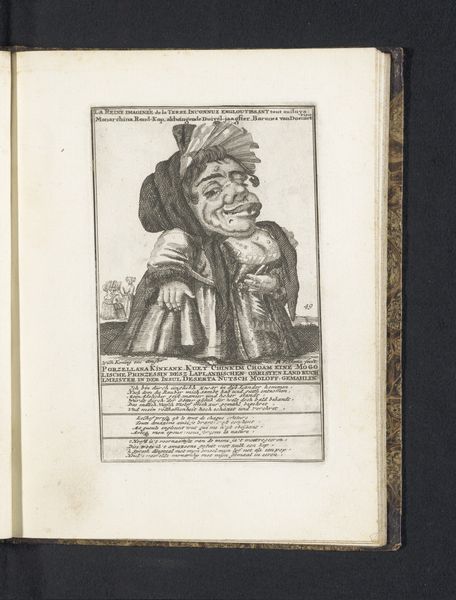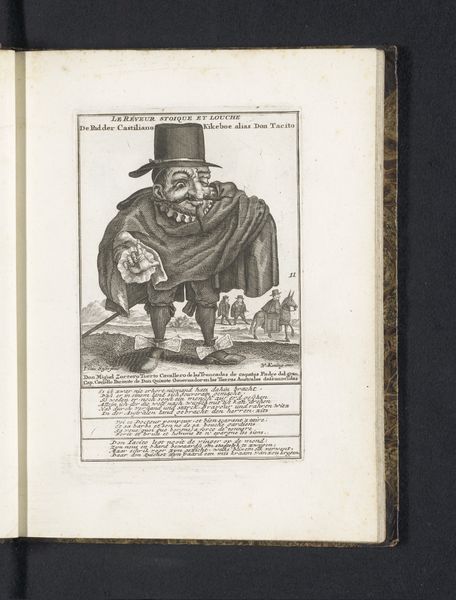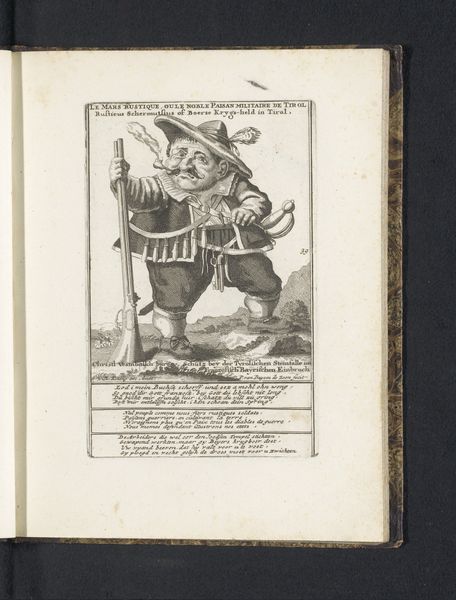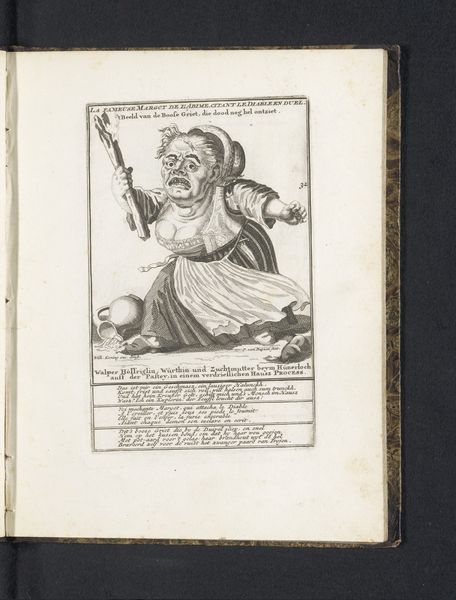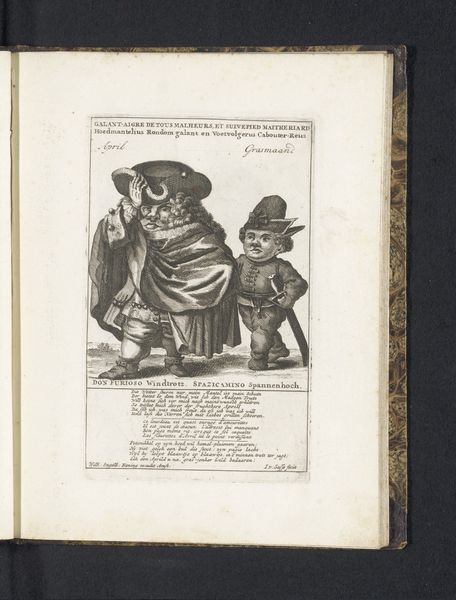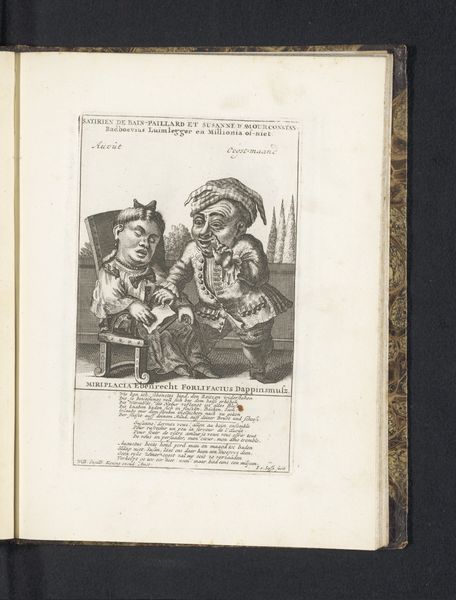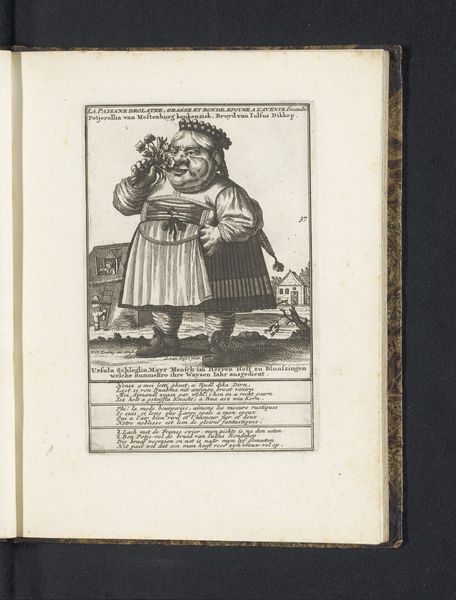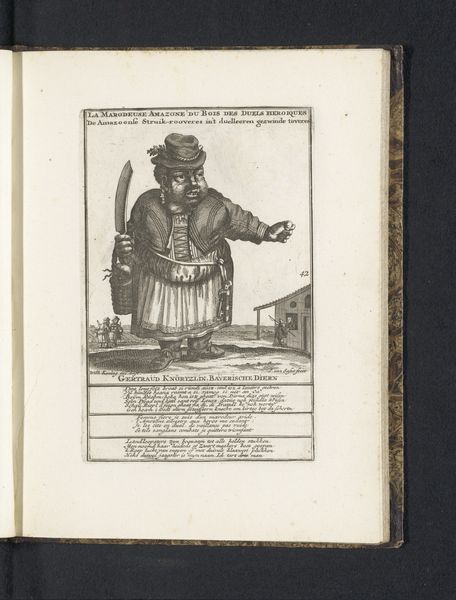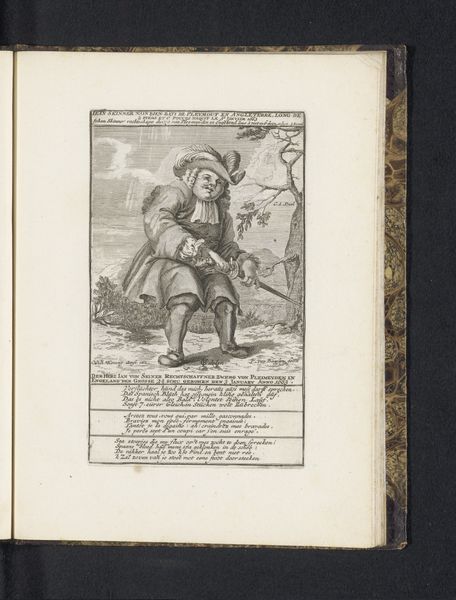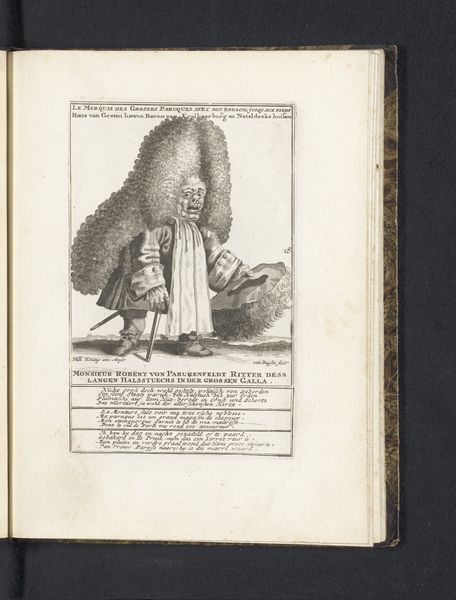
print, etching, engraving
#
portrait
#
baroque
# print
#
etching
#
caricature
#
engraving
Dimensions: height 169 mm, width 105 mm, height 227 mm, width 170 mm
Copyright: Rijks Museum: Open Domain
Curator: This is a powerful, albeit unsettling, example of early 18th-century printmaking. What catches your eye? Editor: This is “De dwerg Zwervende Joodse Meester, 1720” by Joost van Sassen, done with etching and engraving. It's, well, clearly intended to be a caricature. How would you interpret its creation in terms of materials and context? Curator: Well, let’s think about what it meant to create this image using etching and engraving, especially considering its subject. This wasn't a painting, destined for a wealthy patron’s wall. Prints were relatively cheap and easily reproduced. What effect might this have had? Editor: So, it made it much more accessible, widening the audience for this particular…perspective. Were such prints commonly used for satire at the time, reflecting on socio-economic situations through this type of biased representation? Curator: Exactly! The choice of printmaking suggests an intention for wide distribution, aligning with a growing public sphere and perhaps tapping into popular prejudices related to mercantilism. How do you read the caricature in that light? Editor: If prints were relatively accessible, and satirizing certain populations was socially acceptable or profitable... it’s a disturbing confluence of artistic skill, accessible production, and problematic cultural narratives. It makes the image less about individual artistic expression and more about a specific social landscape made manifest. Curator: Precisely. Consider, too, the labour involved – the skilled hand of the engraver, the dissemination of the print. It all points to the material reality underpinning these hateful ideologies. This print isn’t just an image; it’s a commodity, embedded in the economic structures of its time. What do you make of that now? Editor: That refocuses how I look at it entirely. It's no longer just a portrait of an individual but also a portrait of a society that consumed and perpetuated harmful ideas, reproduced en masse. Curator: And how that society chose to use materiality to further its narrative, even today. A sobering lesson.
Comments
No comments
Be the first to comment and join the conversation on the ultimate creative platform.
